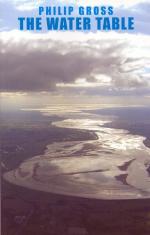|
This section contains 484 words (approx. 2 pages at 300 words per page) |

|
In common usage, the term water table expresses the surface dividing the unsaturated and saturated groundwater zones. More accurately, the water table lies within the saturated zone and separates the capillary fringe from the underlying phreatic zone. The phreatic zone is the area in which water will freely flow from pores in the geologic material. Within the capillary fringe, however, water is drawn upward from the phreatic zone by capillary action within the pores of the material. Smaller pores produce greater capillary force and cause the water to rise higher, resulting in a thicker capillary fringe. The pores in the capillary fringe are fully saturated, as are those in the phreatic zone. However, the capillary action causes the water in the pores to have a pressure that is lower than atmospheric pressure. Water is not able to flow out of these voids.
A more precise definition...
|
This section contains 484 words (approx. 2 pages at 300 words per page) |

|


